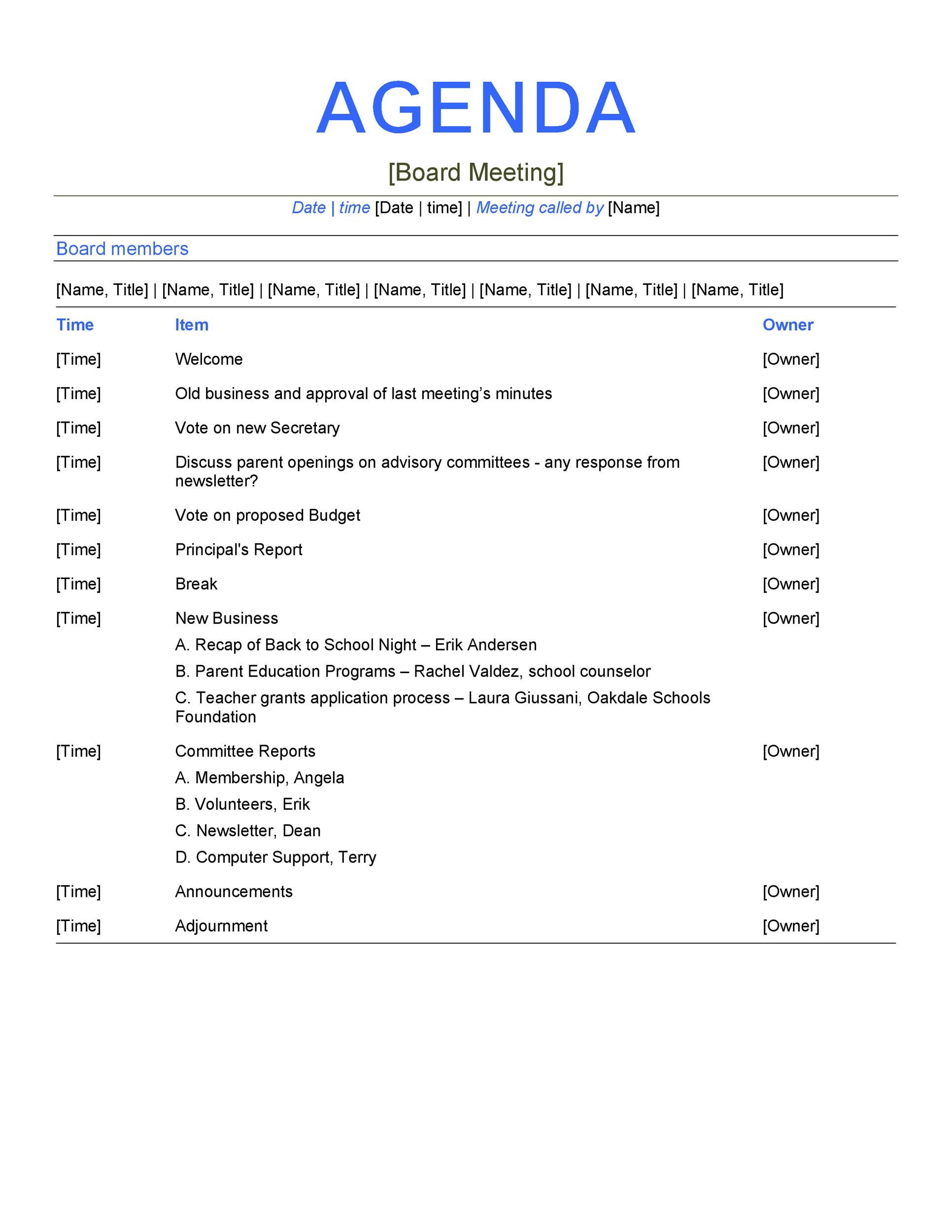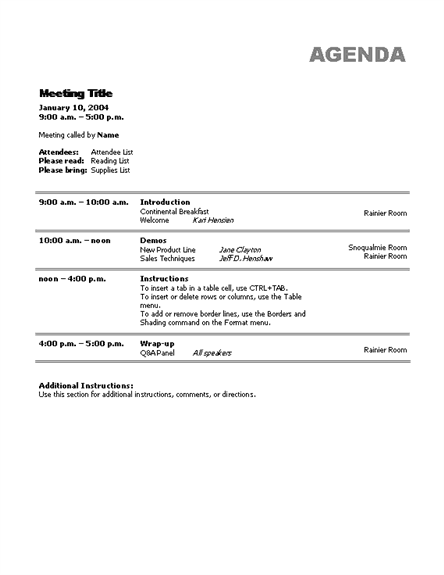

For example, a good meeting structure is to have all informational items go before the discussion items so your team has all of the information before diving into a discussion. They are the critical ingredient that can lend a nice flow to the meeting. What matters is not the agenda but the relevance and importance of what's on the agenda, i.e., the agenda items. Just because a meeting has an agenda in place doesn't mean attendees will automatically have a great meeting experience. Review weekly KPI goals and compare them with actual numbers.Your department meeting agenda can look something like this: Let's say you're meeting with the marketing team on a weekly basis. Use Verbs to Inspire ActionĮach item on the agenda should begin with an action word (verb) to clarify to attendees what the meeting is aiming to accomplish.įor example, don't say, "Growth opportunities," but "Discuss growth opportunities." Verbs can inspire people to get motivated and take action. If you can't think of an objective for the meeting, this is a sign the meeting is a waste of time and should be handled via a tool like Slack.

“Brainstorm 10 ways we could improve organic traffic by the end of the year.” Once you have established the objective of the meeting, it will be easier for you to come up with all the items that should go on the business agenda.įor example, the meeting's objective can be: Knowing the objective gives participants insight into what the discussion will be centered around. You need to know this information and share it with others before anything else. Think about this for a moment: what is the purpose of the meeting you're organizing? Is it to share information? To brainstorm ideas? To come up with a solution to a problem? Creating an objective makes it clear why a meeting is being held and what the meeting is seeking to accomplish.
#MEETING AGENDA TEMPLATE WORD HOW TO#
This chapter will take you through the process of how to write a meeting agenda that is clear, concise, and easy to follow. It can be hard to know where to start with all the different elements that go into one. Planning and writing agendas for meetings can be a complicated undertaking. Without exaggerating, we can safely say that team meeting agendas can transform unproductive meetings into meetings where amazing things happen! How to Write an Effective Team Agenda The best thing is that effective meeting agendas deliver a tangible result: a decision, a plan, a list of ideas, or a shared understanding of the work ahead. It keeps the participants focused on the topic at hand. In addition, making an agenda for a meeting ensures that all topics are discussed promptly. In short, team meeting agendas inform participants of what the meeting is about and let them prepare beforehand. How many times have you attended a meeting that veered off-track? Or a meeting that dragged on for hours? It happens to the best of teams! And that's why you need a team meeting agenda in place. This way, you'll prevent the meeting from getting off track and you'll get to discuss the most critical points. Additionally, meeting agendas help you use your time wisely by organizing the meeting into separate topics and allocating a specific amount of time for each topic. The purpose of the agenda is to inform attendees what to expect during a meeting and how they can prepare for it. Let's dive in! What Is a Team Meeting Agenda?Ī team meeting agenda is a document that contains the specific details of a meeting. Stay tuned until the end, where we provide you with team meeting agenda templates for the most common types of meetings. In this post, we'll look at several tips and best practices for how to write a meeting agenda. The key is to plan and write an effective meeting agenda. The answer is yes! Everyone can learn how to host productive meetings, whether their team is in-office, remote, or hybrid. So, is there a way to make meetings productive again? Meetings should be the place where real work gets done. A report from Reclaim.ai shows that employees now spend 25.3% more time in meetings compared to pre-pandemic times.īut meetings shouldn’t be where productivity goes to die. This is where it gets worse: remote working is increasing the amount of time employees spend in meetings. The sad news is that unproductive meetings are also expensive, costing US businesses $37 billion every year.


 0 kommentar(er)
0 kommentar(er)
